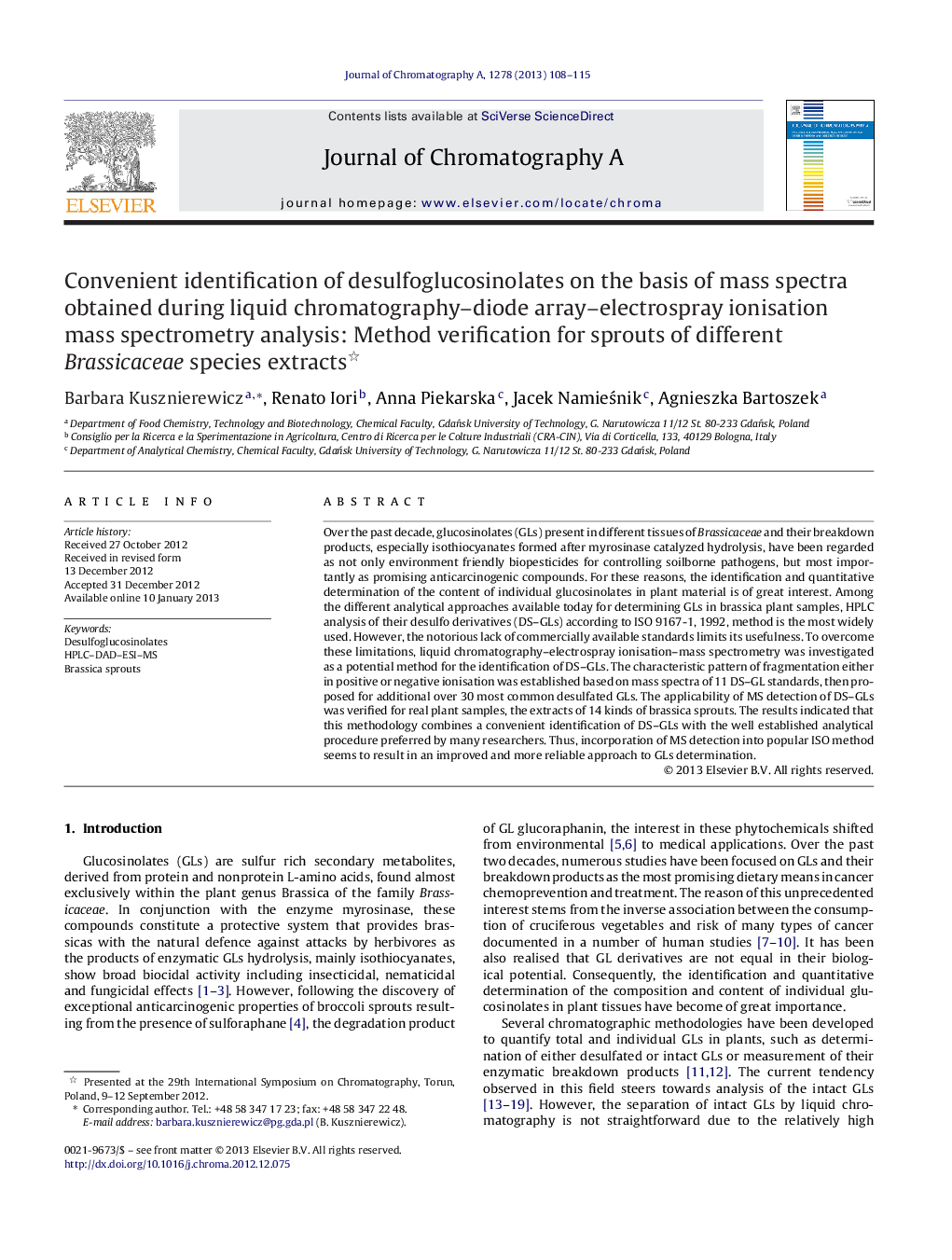| Article ID | Journal | Published Year | Pages | File Type |
|---|---|---|---|---|
| 1201455 | Journal of Chromatography A | 2013 | 8 Pages |
Over the past decade, glucosinolates (GLs) present in different tissues of Brassicaceae and their breakdown products, especially isothiocyanates formed after myrosinase catalyzed hydrolysis, have been regarded as not only environment friendly biopesticides for controlling soilborne pathogens, but most importantly as promising anticarcinogenic compounds. For these reasons, the identification and quantitative determination of the content of individual glucosinolates in plant material is of great interest. Among the different analytical approaches available today for determining GLs in brassica plant samples, HPLC analysis of their desulfo derivatives (DS–GLs) according to ISO 9167-1, 1992, method is the most widely used. However, the notorious lack of commercially available standards limits its usefulness. To overcome these limitations, liquid chromatography–electrospray ionisation–mass spectrometry was investigated as a potential method for the identification of DS–GLs. The characteristic pattern of fragmentation either in positive or negative ionisation was established based on mass spectra of 11 DS–GL standards, then proposed for additional over 30 most common desulfated GLs. The applicability of MS detection of DS–GLs was verified for real plant samples, the extracts of 14 kinds of brassica sprouts. The results indicated that this methodology combines a convenient identification of DS–GLs with the well established analytical procedure preferred by many researchers. Thus, incorporation of MS detection into popular ISO method seems to result in an improved and more reliable approach to GLs determination.
► ISO method of GLs determination extended to MS detection. ► Expected ion fragmentation patterns for 35 glucosinolates. ► GLs composition and content for 14 different brassica sprouts.
